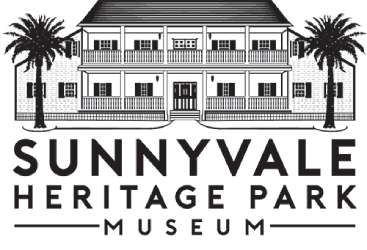Much of California’s commerce, agriculture and education started in the state’s first wood frame house, prefabricated in Maine and shipped around Cape Horn to Sunnyvale where a carpenter reassembled it on Martin Murphy Jr.’s Bay View Ranch. Martin and his family, Irish immigrants whose search for religious and educational freedom led them to California, were the first English speaking family to settle in Santa Clara Valley in 1849. From his home, Martin introduced the area’s first orchards and modern farm equipment and helped to establish the state’s first schools.
Only a few adobe buildings dotted the valley floor when the Murphys settled in the place that is currently Sunnyvale. There were no colonial-style houses in the area since nothing like that was available during California’s Gold Rush. Longing for a New England-style house, Martin instructed carpenters to prefabricate a house in Maine, dismantle it piece by piece and ship it from Boston to California via Cape Horn. A man named Dawson managed to put the house together using wooden pegs and rawhide ties for a reward of 500 acres. Surrounded by 4,800 cultivated acres, the 20-room house became the site for nearly every significant social or political gathering in Santa Clara Valley during the Gold Rush.
1844: The Murphy family’s wagon train was the first to scale the summit of the Sierra Nevada Mountains, opening the California trail to thousands of immigrants.
1849: Martin Murphy Jr. purchased the 5,000-acre Spanish land grant Rancho Pastoria de las Borregas (Sunnyvale), where he established Bay View Ranch, built California’s first wood frame house and planted the valley’s first orchards.
1850: Bay View became the valley’s social, political and religious center. California’s first Supreme Court was established at Bay View and San Francisco’s first Archbishop Joseph Alemany began performing religious services in the “Bishop’s Room,” which contained an altar.
1851: Martin convinced a group of Catholic sisters staying at his home to establish Notre Dame College in San José. He also provided the land and support needed for the founding of Santa Clara University.
1852: Martin and Mary Murphy’s eldest son, James, died in an upstairs bedroom at Bay View while their youngest son, James Jr., was born downstairs.
1863: Martin Murphy granted the Southern Pacific Railroad permission to establish its route on the west side of his property. The family thereafter used the opposite side of the house as the front where all of the activities of travel now occurred. Both sides of the house were similar but the change resulted in a staircase that ran up from the back of the house.
1881: One of California’s largest celebrations was held at Bay View in honor of Mary and Martin’s 50th wedding anniversary. Not wanting to slight anyone, the Murphys sent out a general invitation to the party. Between 8,000 and 10,000 people attended.
1953: Having lived in the house for six continuous generations, the Murphy family sold Bay View to the city of Sunnyvale.
1960: The state recognized Bay View’s significance and designated the Murphy home California Registered Historical Landmark No. 644.
1961: A bulldozer demolished the Murphy home during the early morning hours after months of controversy surrounding the fate of the decaying home. Murphy family artifacts are put in storage where they remain today.
2002: The Sunnyvale Historical Society and Museum Association secured the funding, location and city support needed to reconstruct the Murphy home after 35 years of planning. The Sunnyvale City Council pledged $500,000 toward the estimated $1.6 million project and donated land at the 10-acre Heritage Park at the Community Center on 550 E. Remington Ave.
2006: The Sunnyvale Historical Society and Museum Association broke ground on the project.
2008: Construction of the Sunnyvale Heritage Park Museum was finished and a Grand Opening was celebrated.
Copyright © 2017 Sunnyvale Historical Society and Museum Association, Inc., All Rights Reserved